Religious festivals
Hindu Religious Festivals
Hindu festivals are related to the various myths and legends. They have a cultural as well as deep spiritual meaning behind them. They serve to bring relatives, friends and others together in friendship and love. In addition to festivals, there are also fasts which some Hindus observe on particular days, which have religious significance. Festivals are held on specific dates of Hindu calendar. It would be useful to know about the Hindu calendar. Almost every month there is a festival or a fast, but not everyone celebrates each and every one. Some of the popular festivals will be described here which are widely celebrated throughout India.
The significance of offering prayers at this time is to sit in silence, meditate and make resolves to get rid of evil tendencies and awaken the cognitive faculties like a yogi. Devotion to God and acquiring spiritual knowledge are the main aspects of Shivratri. Devotees chant the Vedic Mantra, "Aum Namah Shivaya, Namah Shankaray, Namah Shambhavaye", meaning we offer our salutations to Lord Shiva, the giver of peace, happiness and good fortune to all.
In ancient days, when a guru initiated a disciple, he tied a red or orange thread around his right wrist, which signified a promise to protect and a bond of mutual love and trust between the pupil and teacher. Even now a Brahmin ties a red or orange thread to a householder's wrist on this day and receives a gift. Later on the practice of sisters tying rakhi to their brothers became prevalent and is still very popular among Hindus. It has become a symbol of affection between a brother and a sister. It also signifies the duty of a brother to protect his sister in the times of crisis.
It is an important festival particularly to the Vaishnavism tradition of Hinduism. Dance-drama enactments of the life of Krishna according to the Bhagavata Purana (such as Rasa lila or Krishna Lila), devotional singing through the midnight when Krishna is believed to have been born, fasting (upavasa), a night vigil (jagarana), and a festival (mahotsava) on the following day are a part of the Janmashtami celebrations.
Navratri means festival of nine nights. It is based on the belief that strength to fight evil and power to protect the weak is represented by the Hindu Goddesses. The nine nights' worship are divided into three days for each of the three Goddesses, Durga, the Goddess of Shakti (strength), Lakshmi, the Goddess of wealth, and Saraswati, the Goddess of knowledge. During these nine days, some people observe fast during the day. Worship and prayer to the Goddesses are performed. The whole function is celebrated on a communal basis. A very popular type of dance is associated with Navratri, called Ras Garba. In North India, where Rama is worshipped with more fervour, festival of Rama Leela is celebrated during Navratri. It is a celebration of Rama's victory over Ravana, the demon king of Lanka. Thus on the tenth day, called Vijaya Dashmi, there is a celebration of the victory of good over the evil. Big effigies of Ravana are burnt with fire crackers.
|
For many Hindus, this festival is their traditional solar new year, a harvest festival, an occasion to bathe in sacred rivers such as Ganges, Jhelum and Kaveri, visit temples, meet friends and party over festive foods. This festival in Hinduism is known by various regional names.
Holi is derived from the word hola, which means offering oblations or prayer to the Almighty as thanksgiving for good harvest. Customarily, grain, wheat, and other grams are roasted in a bonfire (holika) and offered to friends and relatives which promotes a feeling of friendship and brotherhood among the community. There is a legend associated with this festival. It is the story of a female demon called Holika. She was the sister of the demon king Hiranyakashipu. The King's son Prahlada was a great devotee of God, but the King did not favour this idea, as he considered himself to be the Lord of the Universe. The King tried to kill Prahlada and persuaded his sister Holika to help him in the mission. Holika had obtained a boon from Brahma that she would not be burnt by fire, so she entered the fire taking Prahlad in her lap, with the intention of burning him to death. With God's grace Prahlad escaped and Holika was burnt to death for misusing her boon and powers.
The festival celebrates Lord Ganesha as the God of New Beginnings and the Remover of Obstacles and is observed throughout India, especially in the states of Maharashtra, Goa, Telangana, Gujarat and Chhattisgarh,and is usually celebrated privately at home in states of Karnataka, Tamil Nadu, Andhra Pradesh and Madhya Pradesh.
It signifies the victory of divine forces over those of evil. It is a celebration of the homecoming of Rama after 14 years of exile in the forest. Legend is that people of Ayodhya lit thousands of clay lamps known as deepa to welcome Rama, Seeta and Lakshman. In some parts of India, Diwali is also like the New Year's Day for Hindus. Goddess Lakshmi, the Goddess of wealth is worshipped in all households and prayed for prosperity and well-being throughout the year. The legend is that on this very day Goddess Lakshmi appeared during Samudra Manthan and hence she is worshipped. Another legend is that on the day preceding Diwali, Shri Krishna killed the Demon Narakasura who had enslaved about 16000 women. Vikramaditya, the greatest Hindu king was coroneted on this very day. Thus, Diwali signifies victory of light over darkness, knowledge over ignorance and goodness over evil. |
|
|
|

